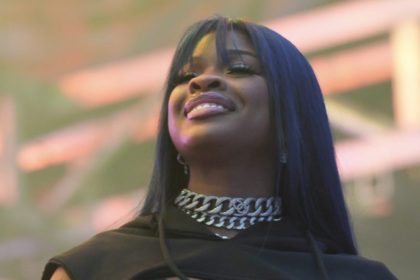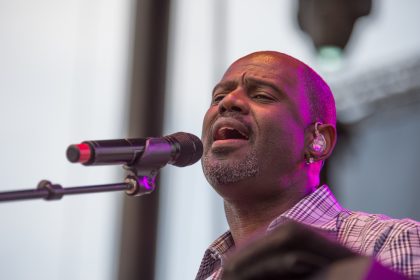Recent data analysis reveals an intriguing shift in holiday music consumption patterns. Music-tracking platform Last.fm has uncovered evidence suggesting that the traditional holiday music season may be experiencing a contraction, marking a significant change in listener behavior that could reshape how we think about seasonal celebrations.
Historical listening patterns
The evolution of holiday music consumption has followed an interesting trajectory over the past few decades. During the 2000s, seasonal favorites were primarily confined to December, creating a concentrated period of festive musical celebration. This pattern remained relatively stable until the early 2010s, when streaming platforms began reshaping how we consume holiday music.
The expansion era
By 2010, streaming data showed the first signs of Christmas music creeping into November, indicating an expanding seasonal window. This trend reached its peak around 2018, when October plays became increasingly common. Music industry analysts attribute this expansion to several factors, including retail stores playing holiday music earlier each year and streaming platforms making seasonal music more accessible than ever.
Digital transformation
The rise of digital platforms has revolutionized holiday music consumption patterns. Streaming services now offer sophisticated algorithms that can detect and respond to subtle shifts in listener preferences. According to industry experts, these algorithms have become increasingly adept at predicting when users are most receptive to holiday content.
Current trends emerge
Recent data tells a compelling story of change. Last.fm’s analytics reveal a notable decline in October and November plays of seasonal favorites. This reversal suggests a possible cultural reset, with listeners actively choosing to delay their holiday music consumption. Music industry analyst Sarah Chen notes, “We’re seeing a clear shift in consumer behavior, possibly indicating listener fatigue with extended holiday seasons.”
Understanding consumer psychology
The psychology behind Christmas music consumption offers fascinating insights into these changing patterns. Dr. Michael Thompson, a cultural anthropologist specializing in holiday traditions, explains that the compression of the holiday music season might reflect a broader desire to preserve the special nature of seasonal celebrations.
Retail impact analysis
The shifting patterns have significant implications for retailers who traditionally use holiday music to create festive shopping environments. Industry research shows that stores playing holiday music too early may actually deter customers, leading many businesses to reconsider their seasonal music strategies.
Global perspective
International streaming data reveals varying approaches to Christmas music across different cultures. European listeners tend to maintain stricter seasonal boundaries, while North American audiences have historically been more flexible with their holiday music timing. However, recent data suggests these patterns may be converging.
Streaming platform dynamics
Major streaming platforms report evolving trends in how users interact with holiday content. Playlist creation patterns show a marked preference for traditional timing, with most users now waiting until late November or early December to create and share holiday-themed playlists.
Social media influence
Social media conversations increasingly shape when people begin their holiday celebrations. Platform analysis shows a growing trend of users pushing back against “Christmas creep,” the phenomenon of holiday celebrations starting earlier each year.
Marketing adaptations
Marketing professionals are taking note of these changing preferences. Jennifer Rodriguez, a digital marketing strategist, observes that brands are becoming more strategic about when they incorporate holiday music into their campaigns, respecting consumers’ desire for more traditional timing.
Generation gap analysis
Different age groups show distinct patterns in their holiday music consumption. Generation Z and younger millennials demonstrate more traditional timing preferences, while older generations show more flexibility in their seasonal listening habits.
Economic implications
The timing of holiday music plays has measurable economic impacts. Retail analytics indicate that properly timed holiday music can increase sales by up to 10%, but premature implementation can have negative effects on consumer behavior.
Technology’s role
Advanced analytics tools now allow unprecedented insight into listening patterns. Streaming platforms use this data to optimize their holiday music rollout, ensuring content alignment with user preferences while maintaining seasonal authenticity.
Cultural significance
The evolution of holiday music consumption reflects broader cultural shifts in how society celebrates seasonal occasions. Anthropologists suggest these changes might indicate a desire to maintain clearer boundaries between different holiday periods.
Future predictions
Industry experts anticipate further refinement of music timing in coming years. Dave Martinez, a music industry analyst, predicts, “We’ll likely see an even more concentrated holiday music season, with higher intensity during peak periods rather than extended exposure.”
Consumer empowerment
Digital platforms have given listeners unprecedented control over their seasonal music experience. This empowerment allows individuals to curate their holiday atmosphere more precisely than ever before.
Broader holiday trends
The shift in music consumption patterns parallels similar changes in other aspects of holiday celebrations, suggesting a broader cultural movement toward more defined seasonal boundaries.
The evolving landscape of holiday music consumption reflects complex interactions between technology, culture, and consumer preference. As we continue to monitor these trends, the data suggests a possible return to more traditional seasonal celebrations, albeit with modern technological influences shaping how we experience and share holiday music. This transformation may well represent a new chapter in how society balances tradition with contemporary lifestyle patterns.













